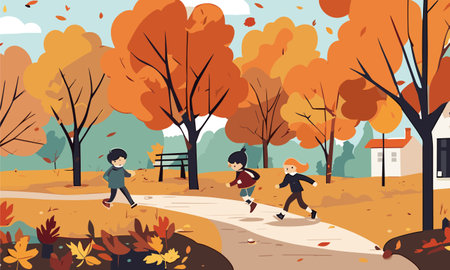1. Understanding Family Tent Capacity and Space
When you’re planning a family hiking trip, choosing the right tent is key to making sure everyone stays comfortable, organized, and happy. Kids need space to move around, and parents want enough room for gear and a little breathing room. Here’s how you can figure out what size tent your family needs.
Why Tent Size Matters
It’s tempting to just buy a tent with the same number of “person” capacity as your family, but that often isn’t enough. American families often bring extra gear, like backpacks, pillows, and maybe even a favorite stuffed animal or two. Plus, you’ll want some space for everyone to stretch out—especially if someone tosses and turns at night!
Think Beyond Just Sleeping Space
When trekking with kids, you’ll need more than just enough space to sleep. Consider these:
- Sleeping Arrangements: Do your kids share a sleeping pad or need separate spaces?
- Gear Storage: Where will you put muddy boots, backpacks, or wet rain jackets?
- Extra Living Space: Is there room to play games inside during bad weather or change clothes without feeling cramped?
Comparing Tent Sizes for Families
| Family Size | Recommended Tent Capacity | Suggested Extra Space Features |
|---|---|---|
| 2 Adults + 1 Child | 4-person tent | Vestibule for gear storage; small interior pockets |
| 2 Adults + 2-3 Kids | 6-person tent | Divided rooms; large vestibule; standing height interior if possible |
| Larger Families (5+) | 8-person tent or larger | Multiple doors; divided rooms; extra-large vestibules; high ceilings |
Tent Tip: Go One Size Up!
A good rule of thumb in the U.S. is to choose a tent that’s rated for one or two more people than will actually be sleeping in it. This gives you wiggle room for gear, personal space, and those unexpected moments—like a midnight snack run for the kids.
2. Weather Protection and Durability
When you’re hitting the trails with your family, the weather can change quickly. Whether you’re camping in the Rockies, the Pacific Northwest, or a breezy Midwest state park, your tent needs to stand up to all kinds of American weather. Here’s what you should look for in a family-friendly hiking tent when it comes to keeping everyone dry, comfortable, and safe.
Waterproofing
A quality tent should have a high waterproof rating. Look for tents with sealed seams, bathtub-style floors, and rainflies that extend well over the doors and windows. These features help keep rain and ground moisture out, even during heavy downpours.
Ventilation
Good airflow is essential for comfort, especially if you’re camping with kids who tend to get warm quickly. Mesh panels on doors and windows allow fresh air in while keeping bugs out. Adjustable vents are also handy for reducing condensation inside the tent on cool nights.
UV Resistance
If you’re camping in sunny spots like California or Arizona, UV resistance is key. Some tents come with fabric that resists sun damage, helping your tent last longer and providing extra protection for your family from harmful rays.
Robust Construction
Kids love to move around and play—your tent should handle it! Sturdy poles (like aluminum), reinforced corners, and heavy-duty zippers ensure your tent will withstand rough handling and blustery winds common across many U.S. campgrounds.
Quick Comparison Table: Key Weather Protection Features
| Feature | Why It Matters | What to Look For |
|---|---|---|
| Waterproofing | Keeps everyone dry during rainstorms | Taped seams, high hydrostatic head rating (1500mm+), full-coverage rainfly |
| Ventilation | Prevents stuffiness & condensation buildup | Mesh panels, adjustable vents, double-layer doors |
| UV Resistance | Protects against sun damage & heat buildup | UV-protected fabrics, darkened sleeping areas |
| Durability | Withstands rough play and wind | Aluminum/fiberglass poles, ripstop fabric, reinforced stress points |
By focusing on these key features, you can be sure your next family adventure will be safe and comfortable no matter what Mother Nature throws your way.

3. Easy Setup Features for Parents
When you’re hiking with kids, the last thing you want is to spend ages struggling with complicated tent poles or confusing instructions while your little ones get restless. Choosing a family-friendly hiking tent with easy setup features can make your outdoor adventure much more enjoyable for everyone.
User-Friendly Designs to Look For
Modern tents come packed with clever design elements that help busy parents set up camp quickly and without fuss. Here are some of the top features to consider:
| Feature | Why It’s Helpful |
|---|---|
| Color-Coded Poles | Makes it easy to match each pole with the right spot, so you can assemble the tent faster—even if you’ve never set it up before. |
| Quick-Pitch Systems | Special clips or hub systems allow you to pitch your tent in just a few minutes, letting you focus on family time instead of wrestling with gear. |
| Freestanding Structures | These tents stand up on their own without needing to be staked out first, making them perfect for any terrain and quick adjustments if needed. |
Why These Features Matter for Families
With young kids running around, parents need all the help they can get. Tents that set up in a snap not only save time but also reduce stress, especially after a long day of hiking. Plus, some kids love helping out—color-coded poles and simple designs mean even little campers can join in and feel proud of helping build the family “home” for the night.
4. Kid-Friendly Tent Amenities
When you’re hiking with kids, having the right tent features can make your trip smoother and way more fun. Let’s look at some family-approved tent amenities that help keep things organized, convenient, and exciting for young adventurers.
Multiple Doors for Easy Access
Kids are always on the move, and having more than one door can be a real game-changer. Multiple doors mean less crawling over sleeping bags—and each family member can get in and out without waking everyone up for midnight bathroom breaks or early morning explorations.
Interior Pockets and Organization
Keeping track of flashlights, snacks, and favorite toys is much easier when your tent has plenty of interior pockets. These built-in organizers help kids keep their treasures safe and make it simple for parents to find essentials in the dark.
| Amenity | Why It’s Helpful |
|---|---|
| Mesh Pockets | Great for holding small items like headlamps, books, or snacks within arm’s reach. |
| Gear Lofts | Extra overhead storage keeps the floor clear and gear dry—even if little feet are everywhere. |
| Multiple Doors | Makes getting in and out easier for families, reducing late-night disruptions. |
| Mesh Windows | Adds airflow while letting kids check out the stars—adventure from inside the tent! |
Mesh Windows: Fresh Air & Adventure Views
Tents with mesh windows offer plenty of ventilation—a must when camping with energetic kiddos. Plus, these windows let everyone peek outside to spot squirrels or watch the sunrise together, turning bedtime into an adventure all its own.
Gear Loft: More Room to Play
A gear loft gives you a handy place to stash bulky items like jackets or games up high. That way, there’s more space on the tent floor for storytime or playing cards when it’s raining outside.
Quick Tips:
- Choose tents with color-coded poles for easy setup—even if little campers want to help.
- Look for models with glow-in-the-dark zipper pulls so kids can find their way at night.
- Pockets at kid-height help young campers stay organized and independent.
Selecting a tent with these kid-friendly features makes camping as a family more organized, comfortable, and full of fun discoveries—just what every American family adventure should be!
5. Safety and Location Considerations
Picking a Safe Campsite in US Parks
When hiking with kids, choosing the right campsite is key for both comfort and safety. In the United States, many national and state parks offer family-friendly camping areas, but it’s important to know what to look for:
| Campsite Feature | Why It Matters |
|---|---|
| Flat Ground | Prevents rolling during sleep and helps tents stay stable. |
| Distance from Water | At least 200 feet away from lakes or streams to avoid flooding and protect water sources. |
| Away from Cliffs or Drop-offs | Keeps kids safe from accidental falls. |
| Shaded Area | Keeps tent cool and protects against sunburn. |
| Official Campsites When Possible | Often have fire rings, picnic tables, and are patrolled by park rangers. |
Proper Tent Placement Tips
- Check for Hazards: Clear away rocks, sticks, or pinecones where you’ll set up your tent. Look up to make sure there are no dead branches (“widowmakers”) above your site.
- Face the Door Away from Wind: Position your tent entrance downwind to avoid wind blowing directly inside.
- Avoid Low Spots: Stay clear of valleys or depressions where rainwater can pool.
- Keep a Safe Distance from Food Storage: If you’re in bear country, set up your tent at least 100 yards away from where you store food or cook.
Important Safety Checks Before Bedtime
- Zippers Closed: Double-check that all zippers are shut to keep bugs and critters out.
- Gear Organized: Keep flashlights or headlamps within reach for nighttime bathroom trips.
- Emergency Plan: Make sure everyone knows what to do if they need help—show older kids how to use a whistle or call out loudly if needed.
- Tent Stakes Secure: Ensure all stakes and guylines are tight so the tent stays put even in windy weather.
- No Loose Food Inside: Remove snacks or scented items from the tent to avoid attracting animals overnight.
Your Peace of Mind Matters!
A little extra planning goes a long way when you’re trekking with kids. Following these safety tips will help create a relaxing experience for the whole family, letting you focus on making happy camping memories together.

